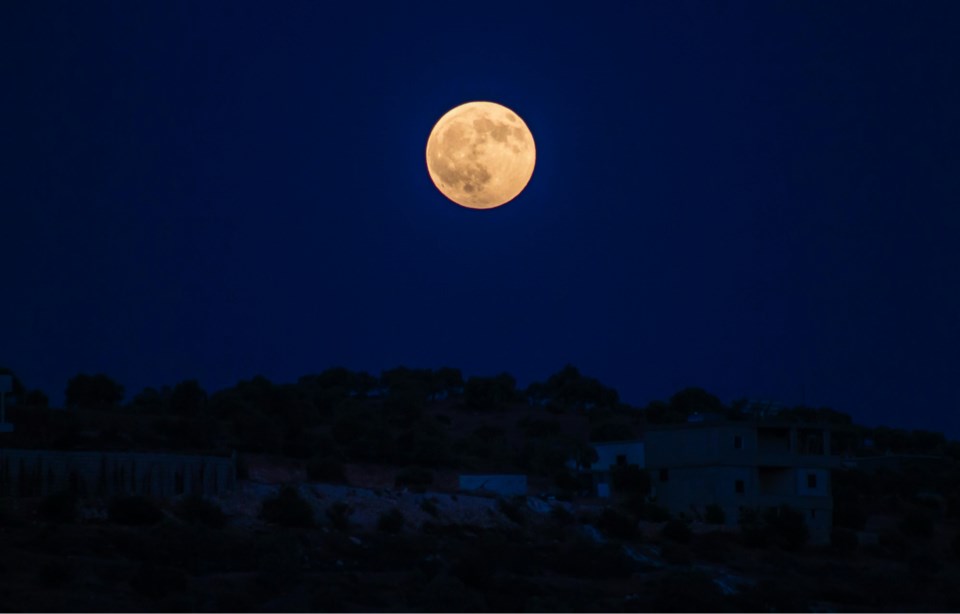The moon was last quarter on June 28, so is waxing gibbous in the sky as July opens. July 1, Mars is four degrees south; July 2, Uranus is four degrees south and the moon is 0.3 degrees from the Pleiades (the Seven Sisters); July 3, Jupiter is five degrees south; and new moon is July 5. Mercury is three degrees south July 7. July 12, the moon is at its furthest distance from Earth in its orbit (apogee) at 404,362 kilometres, and at first quarter the following day. That same evening, July 13, the bright star Spica is occulted by the moon for North American viewers.
It’s always a treat to watch the Solar System in motion as the moon glides in front of another planet or star, then a couple of hours later, watch it reveal the occulted object.
July 17, Antares, the red star in Scorpius, is less than one degree away, and occultation in the 小蓝视频ern Hemisphere. The moon is full July 21, and perigee is July 23 at 364,917 km. Then Saturn and Neptune are occulted July 24 and 25, respectively, for observers in distant lands – close approaches for North American viewers. July 29, the moon is back where it started the month, 4 degrees north of Uranus and 0.1 degree south of the Pleiades; July 30, both Mars and Jupiter are five degrees south.
Mercury, in the evening sky, is among the stars of the Beehive Cluster (M44) on July 7. Observing Mercury is challenging, as the ecliptic hugs the horizon. This is the best apparition for southern viewers in 2024.
Venus slowly emerges from behind the sun in the western evening sky. However, like Mercury, the unfavourable angle of the ecliptic makes viewing a challenge.
Mars rises a little after midnight, not far from the Pleiades and the Hyades, shortly after Uranus rises and just a little earlier than Jupiter. This could be a good photo opportunity with the three planets closely grouped among the bright Taurus stars. July 15, Mars is just 0.6 degrees from Uranus. The waning crescent moon is to the northeast July 30.
Jupiter is among the stars of the Hyades, just to the northeast of Aldebaran, and not far from Mars and Uranus in the early morning northeastern sky. The waning crescent moon is to the northwest July 30. There are some double-shadows and transits on Jupiter – the first is a double shadow July 20; then double-shadows and transits July 23, 27 and 30, respectively.
Saturn rises shortly after midnight among the stars of Aquarius as July begins, rising higher with each passing day. The planet’s famous rings are nearly edge-on, at their minimum angle for 2024. The waning gibbous moon passes by July 24.
Uranus, in Taurus, rises higher each morning a couple of hours before the sun, ascending the ecliptic
Neptune is a tough object to observe – its extreme distance precludes unaided viewing, so a telescope or powerful binoculars are a must. The waning gibbous moon passes closely on the early morning of July 25, an occultation for viewers in the extreme northwest of Alaska and Yukon Territory.
On July 28, the south delta Aquariid meteors peak in the evening.
James Edgar has had an interest in the night sky all his life. He joined the Royal Astronomical Society of Canada in 2000, was national president for two terms, is now the editor of the Observer’s Handbook, and production manager of the bi-monthly RASC Journal. The IAU named asteroid 1995 XC5 “(22421) Jamesedgar” in his honour and in 2021 he was awarded a Fellowship of the RASC.




